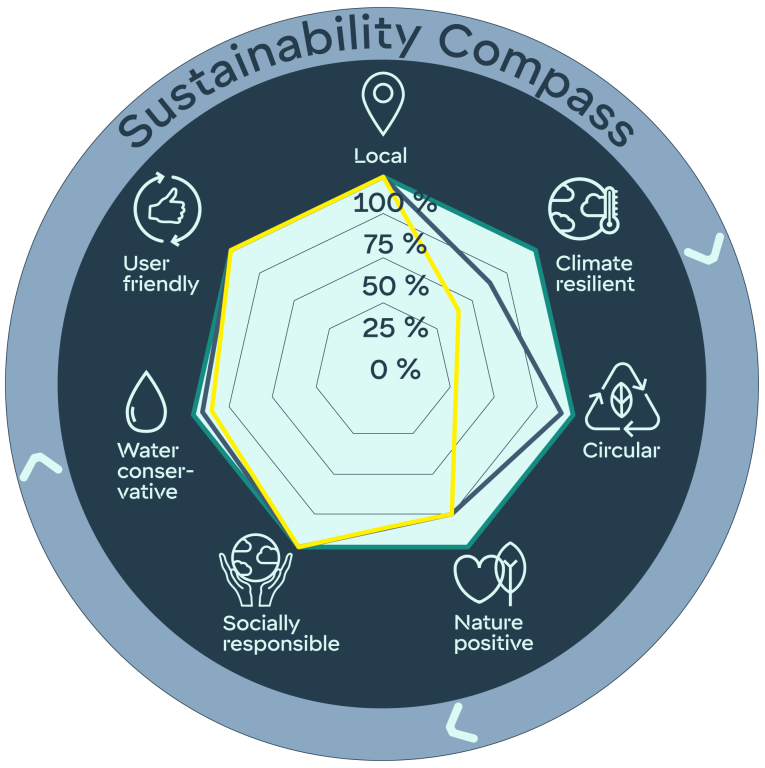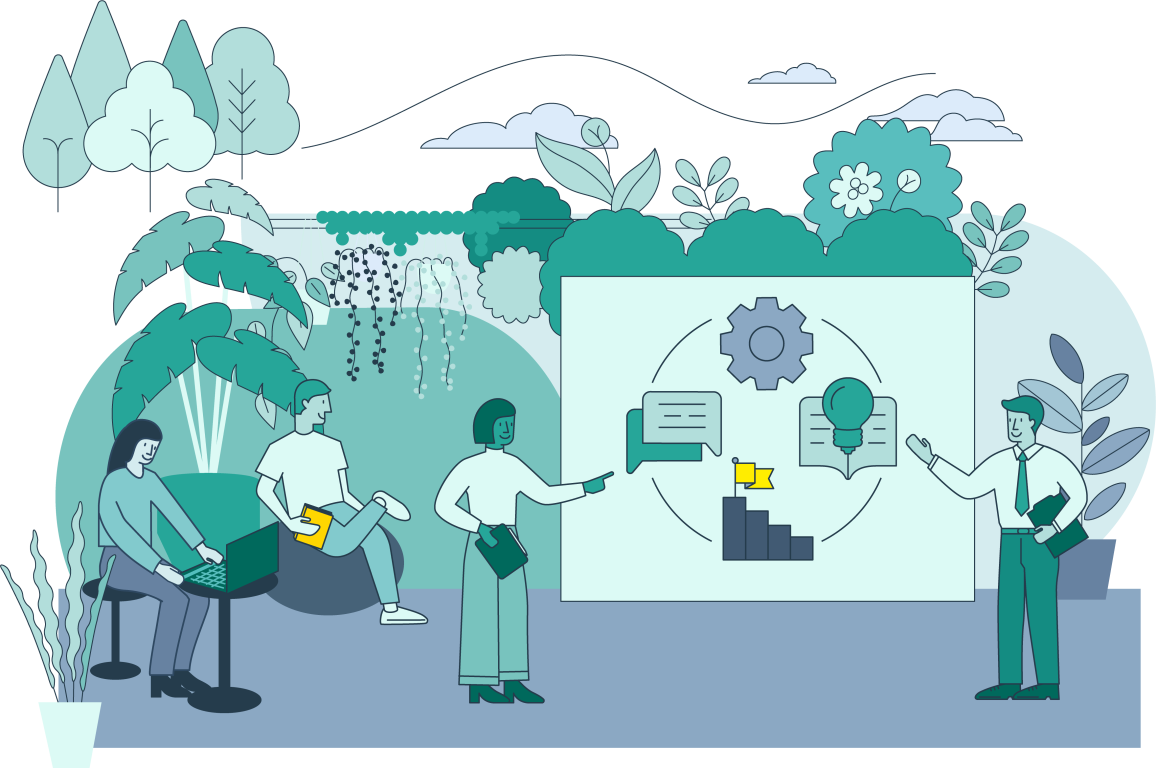Calculating the Sustainability Compass score
 For each aspect multiple questions are asked that will determine the overall score per aspect. Some questions are irrelevant depending on what you are assessing, a raw material or a product. Per aspect the final score is a percentage calculated by dividing the actual score by the maximum score for that aspect.
For each aspect multiple questions are asked that will determine the overall score per aspect. Some questions are irrelevant depending on what you are assessing, a raw material or a product. Per aspect the final score is a percentage calculated by dividing the actual score by the maximum score for that aspect.
The overall Sustainability Compass Score is an average of all scores per aspect.
For the aspect ‘Fit for Purpose’ qualitative questions are asked and when a material or product are not seen as ‘Fit for Purpose’ , the overall Sustainability Compass is zero. And because it does not fit the needs of the customer, this can not be seen as a sustainable product. There is no need to then answer the other aspects any further.
Assessment aspects for Product with packaging
0. Fit for purpose
1. Local
2. Climate resilient
3. Circular
4. Nature positive
5. Socially responsible
6. Water conservative
7. User friendly
8. Sustainable packaging
Assessment aspects for Product without packaging
0. Fit for purpose
1. Local
2. Climate resilient
3. Circular
4. Nature positive
5. Socially responsible
6. Water conservative
7. User friendly
Assessment aspects for Raw material
0. Fit for purpose
1. Local
2. Climate resilient
3. Circular
4. Nature positive
5. Socially responsible
6. Water conservative
Sustainability Compass Aspects
 0. Fit for purpose
0. Fit for purpose
The effectiveness of our solutions is the starting point for any new development. If a solution is not fit for purpose it is a waste of energy, materials, water and labour for the whole value chain.
 3. Circular
3. Circular
The more materials we use that are not mined and are regenerated in the short term, the easier it is to secure supply. Similarly we need to ensure a valuable second life.
 6. Water conservative
6. Water conservative
Availability of water differs amongst regions, we should make sure we only use water where it is sufficiently available.
 7. User friendly
7. User friendly
Our solutions should be safe to use, easy to use and contribute to the sustainability of the user.
All aspects within the Sustainability Compass
About the Sustainability Compass
Kekkilä-BVB Sustainability Compass by Kekkilä-BVB is licensed under CC BY 4.0
